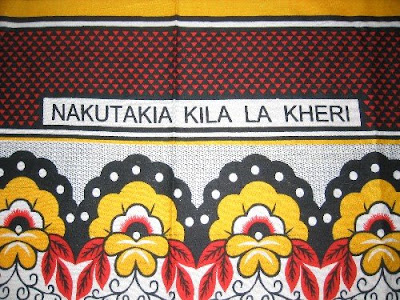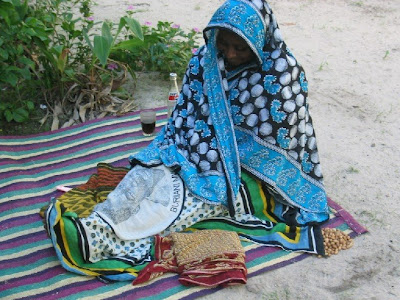I have no idea what prisons or jails are like in Turkey today, but I know that they are not good places to be in any part of the world, and Turkey, especially, gives me the weakness in the knees. Well, today I have a cyber-friend, Catherine Salter Bayar, who wrote in a panic because her husband, Abit, might be thrown into debtor's jail for almost a year. I have no money to help her, but I do have this blog and I am hoping that many of you out there will rise to the occasion and help prevent this disaster.
 Catherine and Abit own a store and coffee shop in Turkey. They have a shop on Etsy and I approached Catherine several months ago to write for Fiber Focus. She has become a regular contributor (see her other articles) and we were just talking about the next two she will be submitting. Little did we know we would have to put out this appeal!
Catherine and Abit own a store and coffee shop in Turkey. They have a shop on Etsy and I approached Catherine several months ago to write for Fiber Focus. She has become a regular contributor (see her other articles) and we were just talking about the next two she will be submitting. Little did we know we would have to put out this appeal! We bonded immediately because of our passion for textiles, for the people who make them, and because we are both American white girls married to wonderful Muslim men who drive us crazy. (Not really crazy, but we can compare notes, right?) Catherine is writing a book on Turkish textiles and is a member of our Fiber Focus group. I asked Catherine to write a short description of what their needs are so I could post it here and here is what she wrote:
We bonded immediately because of our passion for textiles, for the people who make them, and because we are both American white girls married to wonderful Muslim men who drive us crazy. (Not really crazy, but we can compare notes, right?) Catherine is writing a book on Turkish textiles and is a member of our Fiber Focus group. I asked Catherine to write a short description of what their needs are so I could post it here and here is what she wrote: "The summer is nearly over, and it's been a pretty good one...until this past month of August. Always tough due to the heat (smart tourists do not visit now if they can help it!), our cash flow has dwindle to near $0. Anyone who has a small business knows that cash flow is crucial - no business stays afloat long without it. September and October have always been our best months for sales here, so we were hoping to ride it out.
"The summer is nearly over, and it's been a pretty good one...until this past month of August. Always tough due to the heat (smart tourists do not visit now if they can help it!), our cash flow has dwindle to near $0. Anyone who has a small business knows that cash flow is crucial - no business stays afloat long without it. September and October have always been our best months for sales here, so we were hoping to ride it out.But here in Turkey, there is an interesting twist when a cash flow crunch means a missed small business final loan payment of $5,200, due this past Monday, August 25th. We promptly received court papers today (delivered on a Sunday!). If not paid by this coming Thursday, my husband Abit will have to go to debtor's jail...for 340 days!
We knew there could be jail time involved, but had no idea they could keep him nearly a year, for Heaven's sake! Makes no sense whatsoever. At the same time, we have to renew our Cafe Mosaik's lease for the next 6 months this week at $5,000 or they will move us out of there.
 We have travelers coming to see us from the US both here and in Istanbul in September. We plan to spend November through March in the US, visiting friends and selling a huge vintage collection of kilims and carpets a colleague has in California. But we need an immediate $10,000 to make it until then.
We have travelers coming to see us from the US both here and in Istanbul in September. We plan to spend November through March in the US, visiting friends and selling a huge vintage collection of kilims and carpets a colleague has in California. But we need an immediate $10,000 to make it until then. Can you help? Our Etsy shop is full of lots of wonderful Turkish textile treasures to buy. Or, make a donation to keep my hard-working, extended family of 15 supporting husband out of debtor's prison. Anyone wanting to partner with us in either shop or Cafe is welcome to inquire as well.
Can you help? Our Etsy shop is full of lots of wonderful Turkish textile treasures to buy. Or, make a donation to keep my hard-working, extended family of 15 supporting husband out of debtor's prison. Anyone wanting to partner with us in either shop or Cafe is welcome to inquire as well. Thanks for all your help and best wishes - we appreciate them immensely!"
Thanks for all your help and best wishes - we appreciate them immensely!"Well, the thing that gets me is that if Abit goes to jail, he becomes unproductive. How can he even hope to get caught up from there? I can understand being penalized by a fine or serving time doing community service, but what good is to anyone to be in jail or prison or confined in any way?
So, WHY do we put ourselves through all this stress? Why, why, oh, why? I think about it all the time. I think it is because we love what we do and we have that undying hope that someday all our hard work will support ourselves and the people we represent. The business of working with artisans is not only about the finished product. It is about preserving choices in our world that remain outside the net of mass consumerism and production. But, because we may be white or educated, possibly from a middle class background, we are perceived as people who are affluent and full of options. If you stick with it long enough and don't succeed, eventually those options do dry up.
Well, without writing a dissertation about this, if you would like to help Catherine and Abit, there are several things you can do:
- Shop at their Etsy store.
- Ask them what other inventory they have on hand they could sell you.
- Catherine mentioned they are open to investors in their business. Take a look at their website and see if there is a possibility there for you.
- Shop at my Etsy store. If you buy something now through September 5th, I'll give 15% of the sale to them. (Wish I could do more, but I have my suppliers that need to be paid, too...) Leave a note for the seller at the time of purchase or through Pay Pal at the time of payment saying "This purchase is for Catherine and Abit".
- Finally, here is a donation button that goes to Catherine's Pay Pal account. Any amount will help!We finish with "Money Makes the World Go Around"UPDATECatherine reported this morning that $744 has been raised through this article in sales and donations! What a wonderful response! Yesterday's traffic to the site was the highest Fiber Focus has ever had which reinforces for me, how ready people are to help in whatever way they can. They still have to raise another $4K, so please spread the link to this article. We have another four days to work on this. Abit is seeing a lawyer today to see if he can get an extension. We'll report again later in the day. Many, many thanks to all of you who have been so generous with purchases, donations and spreading the word!Update, September 3rdAn enormous THANK YOU to everyone who purchased from our Etsy site or gave a donation - we made $1,744 because of your generosity!!! And a huge debt of gratitude to Rachel at Fiber Focus for bringing this to your attention.Knowing that sum of money was on its way to our bank via PayPal plus giving them the cash we had on hand, Abit managed to talk the small business loan people plus the cafe landlord into holding off, but only until Friday.We do still have to come up with about $4,000 more by then. After jumping that hurdle, we have 10 days (actual, not business days) to pay the final $4,000 owed to both parties.So, we would appreciate you spreading the word to anyone else you may know. We are truly thankful for your support! All orders will be shipped this week - I apologize for being too 'wound up' to finish packing them up today.Another update Friday...
(Note to all: You probably already knew this, but when I return to the States this fall, I will be getting a PayPal debit card so I could have withdrawn funds immediately, instead of being in nail-biting limbo for 3 days as I am now...)
Newest Update, September 5th
The reader response really has been wonderful! However, they still need help, so if you can keep this post going by forwarding it to your friends or posting about it in your blog, maybe we can help them a bit more. Help Abit a bit? I'm sure he's heard that before!
I'm going to return to my regular posts now, but will continue to update here as Catherine sends me news. Many, many thanks to all of you!















































